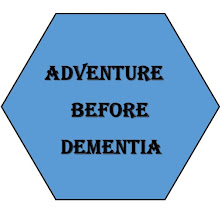In one little town, we saw how the owner of the petrol station avoided constant changing of gas prices - just tell it like it is.
We stopped at the gold mining town of Reefton, whose claim to fame is that it was the first city in the Southern Hemisphere to have electricity. Today, it has many buildings dating back to the 1870's when the gold rush was in full swing. But who cares about history when New Zealands national rugby team, the All Blacks, is playing in a test match with France. We gathered around a TV to catch the second half. We learned a little more about the game, but watching Wayne and Allen (our driver) was as entertaining as the game itself.
After cheering our team to a smashing victory, we walked over to the Bearded Mining Company. This is a replica of a miner’s hut depicting 1860's style housing made of cedar slabs and set amongst native plantings, including manuka shrubs. Gavin, Peter and Geoff are 'in residence' all year and invited us in for a cup of billy tea and fresh scones (baked in a wood-burning oven).

They told us a bit about how miners lived in the 19th century and showed us how gold panning was done.
Well fed, we took a walk on the Murray Creek Goldfield Track, which wound through a lush forest, with lots of ferns.
We also walked through several areas where gold was processed - in the old days. We saw equipment used in the 1880s and ended up at the local museum. Then it was back to town to the local tea room for lunch.
Well fed again, we headed back toward the coast, with a stop at the Buller Gorge (on the Buller River). Once again, we were amazed at how much foxglove is growing wild across the countryside.
First stop on the coast was Cape Foulwind, so named by Captain Cook because his ship Endeavor was blown well out to sea from this point in a particularly unpleasant patch of weather. We hopped off the coach and got a good look at the weka, a flightless rail related to the kiwi.
We took a deep breath and set out on the 1.5 hour coastal walk from the cape to Tauranga Bay - it was cool and very windy, but beautiful - the track goes along the edge of a cliff, past rolling hills of grazing pasture, with nice views of sandy beaches and granite bluffs.
At Tauranga Bay, we got a look at a breeding colony of New Zealand fur seals, with several males, more females, and a few pups scattered over the rocks below. Even though it is endangered, the fur seal is the most common species of seal found in New Zealand - they do seem to like exposed, rocky coastlines.

After our hike, we headed south again and made a quick stop at Irimahuwhero Point, for a look at the rugged coastline of the west coast.
From there, it was onward to Punakaiki, to visit Paparoa National Park for a look at the Pancake Rocks. To reach the coast, we walked first through a dark canopy of wind-blown coastal forest that features the Nikau, New Zealand's only native palm and the most southerly palm in the world. Tree ferns are among the tangle of subtropical species growing in this area, as well as extensive stands of flax. Some of the flax was at least 8 feet tall.
Nature began this work of art about 30 million years ago. Over thousands of years, alternating layers of small marine creatures and sand became buried and compressed on the ocean floor, thus creating multiple layers of hard limestone and softer sandstone. Earthquake activity then lifted the ocean floor high and dry, and rain and wind began to erode the softer sandstone. The result is cliffs and ravines with hundreds of horizontal slices, like huge stacks of pancakes.






















